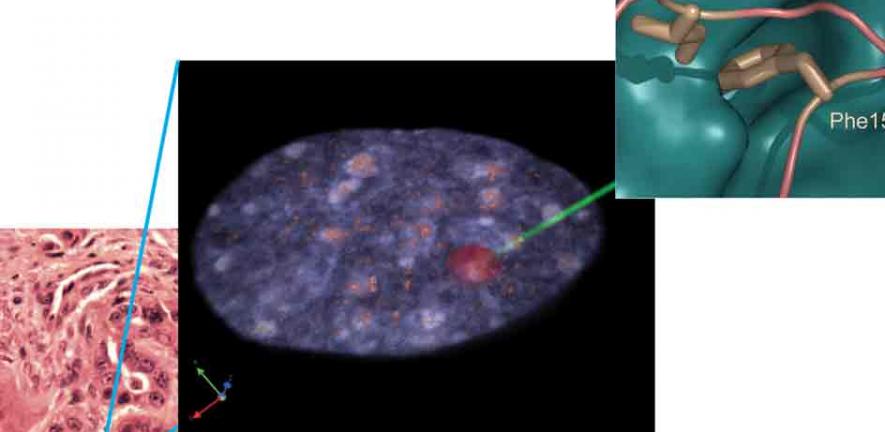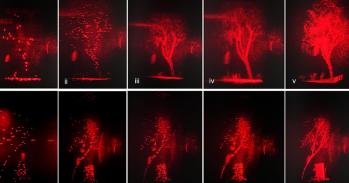
A new Cambridge programme aims to meet the challenges of drug discovery by harnessing a spectrum of academic expertise.
A new Cambridge programme aims to meet the challenges of drug discovery by harnessing a spectrum of academic expertise.
One objective is to develop innovative methods to discover drugs against novel or difficult targets, for which we have established several approaches in-house or with industrial partners
Professor Ashok Venkitaraman
A major scientific priority worldwide is the discovery and development of new drugs for treating human diseases. Our understanding of the molecular circuits controlling normal and diseased cells is now incredibly detailed. But with each major advance in fundamental science comes an abundance of potential targets for the next generation of medicines. How can these novel discoveries be translated smoothly to clinical benefits?
A new multidisciplinary initiative, the Cambridge Molecular Therapeutics Programme (CMTP), is pioneering methods for the discovery of drugs against new types of targets traditionally viewed as ‘difficult-to-drug’. Equally important, these drugs are being used as chemical tools to find innovative ways for the successful clinical development of new medicines.
Considering the challenges
Drug discovery is expensive and protracted: the average cost of developing a new biotechnology product has been estimated to be $1.2 billion (http://csdd.tufts.edu). ‘One of the key challenges in this process is the limited repertoire of molecular targets that have been successfully ‘drugged’,’ explained Professor Ashok Venkitaraman, at the Department of Oncology and the Hutchison/MRC Research Centre. ‘Despite the large number of molecular targets now implicated in human diseases, perhaps around 95% of new drugs are being made against fewer than 5% of the potential targets.’
To make matters worse, many new drugs are ineffective during early clinical tests in patients. Often this is the result of gaps in our understanding of their biological effects on cells and tissues, as well as the difficulty in identifying those patients who are most likely to benefit from the new treatments.
Exploring new paths
The CMTP, funded by the Medical Research Council (MRC), the Wellcome Trust and the European Union, brings together researchers from across the University to address these challenges in relation to cancer and infectious diseases. Jointly directed by Professor Venkitaraman and Professor Sir Tom Blundell (Department of Biochemistry and Chair of the School of Biological Sciences), the initiative entails close cooperation with colleagues in the Department of Chemistry, including Professor Chris Abell, Professor Shankar Balasubramanian and Dr David Spring, as well as Professor Mike Payne at the Cavendish Laboratory. Each team brings a unique yet complementary set of skills to the programme.
‘One objective is to develop innovative methods to discover drugs against novel or difficult targets, for which we have established several approaches in-house or with industrial partners,’ said Professor Venkitaraman. ‘As one important example of our efforts, small fragments of drug molecules are being soaked into crystals of the target to identify the site and nature of the binding interaction, and this information is being used to design and synthesise new types of inhibitors,’ explained Professor Blundell. Professor Venkitaraman added: ‘Other work in the CMTP combines chemistry and physics with functional genomics, fluorescence imaging and molecular cell biology to derive unique insights into human physiology and pathology. Through this we hope to guide the better design of clinical trials to test new drugs and to identify ‘biomarkers’ that help to distinguish patients who will benefit from the treatments.’
A new research paradigm
‘The considerable strengths of Cambridge science in the physical, chemical and biomedical disciplines haven’t previously been harnessed in this way to underpin a unique interdisciplinary collaboration for drug discovery,’ said Professor Blundell. With its goal-oriented and milestone-driven organisation, the CMTP is offering a new and collaborative model for pharmaceutical research in an academic setting, smoothing the path from drug discovery to the clinic.
This work is licensed under a Creative Commons Licence. If you use this content on your site please link back to this page.





